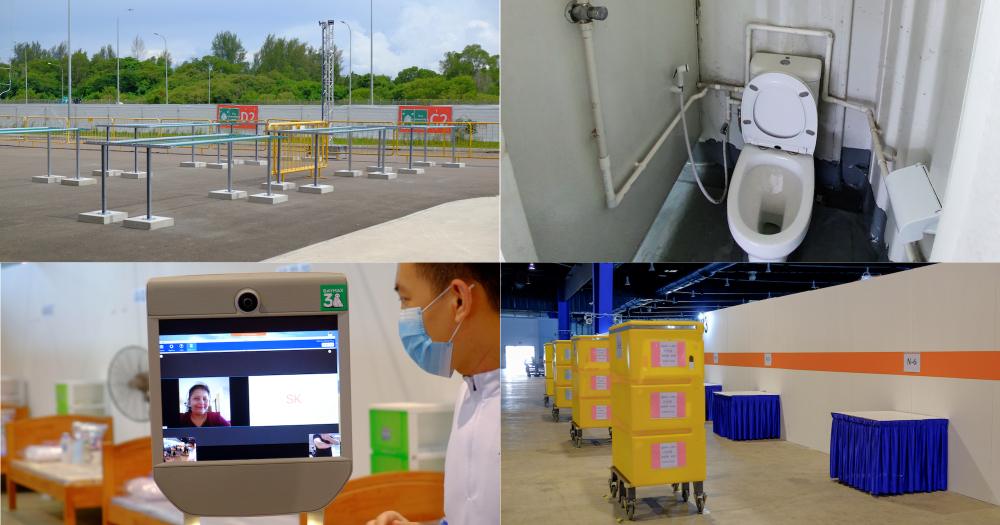Three months ago, the 33,000m² Changi Exhibition Centre (CEC) housed exhibitions for the Singapore Airshow 2020.
Today, it has been transformed to house up to 2,700 Covid-19 patients as a Community Isolation Facility (CIF), with plans to expand its capacity to a total of 4,400 patients.
From an exhibition hall to a community isolation facility
The facility was set up by a task force comprising of nine MINDEF-associated organisations and was set up within a span of 19 days by over 200 personnel.
On Saturday, April 25, it received its first patients, around 50 of them. These patients are those who have recently been diagnosed or are recovering from the virus. Most of them are foreign workers.
To ensure the safety of the staff working at CEC, the facility is segregated into three zones: Red, Yellow and Green.
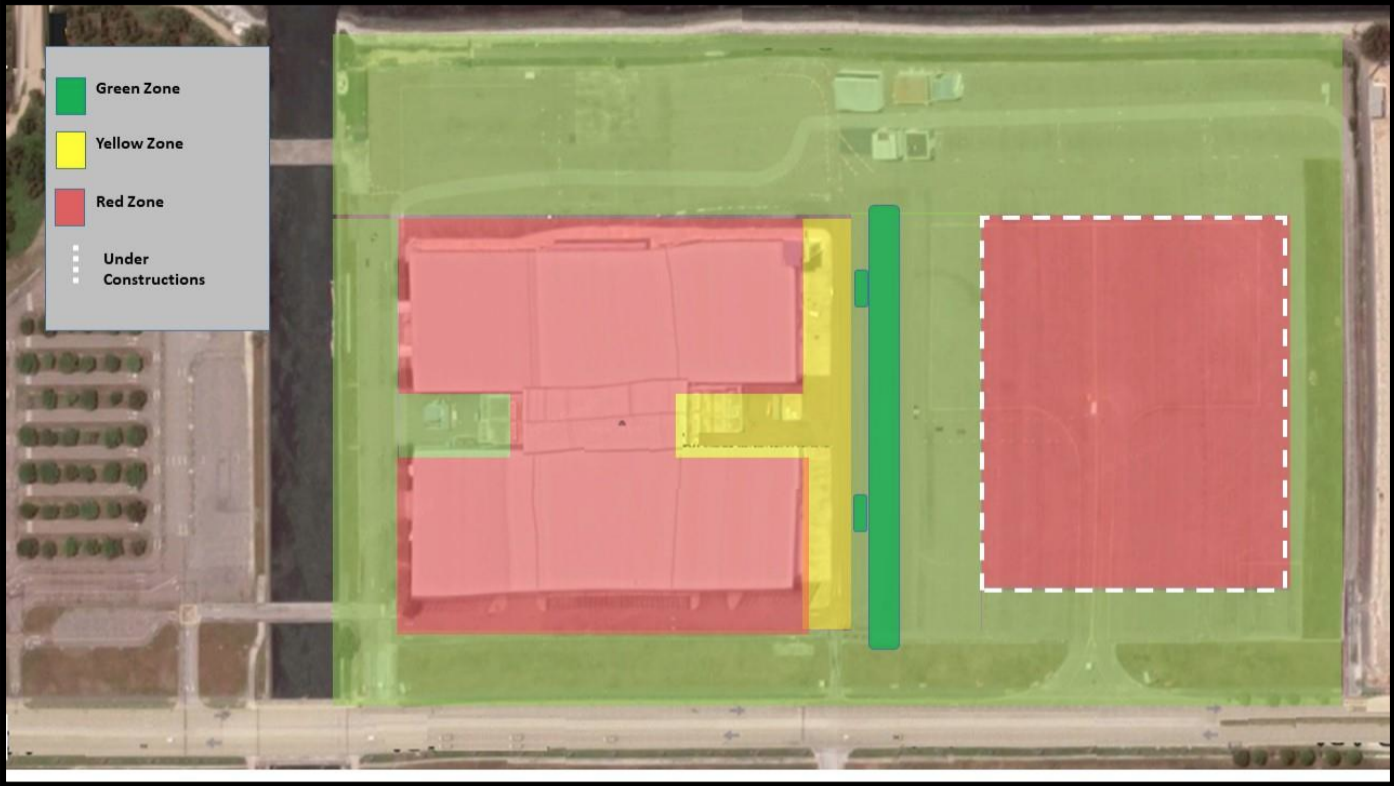 Diagram from CEC Facility Executive Committee
Diagram from CEC Facility Executive Committee
The Red Zone houses all Covid-19 patients. Only authorised personnel, which consists of medical staff, cleaners, and security staff, are allowed to enter, and they must don full Personal Protective Equipment (PPE). There are roughly 30 staff in the Red Zone at any point in time. The Red Zone includes the patient's living areas, toilets, showers and laundry facilities.
The Yellow Zone is a transit area for staff to check that they have securely worn full PPE before entering the Red Zone. It is also where they will be disinfected when they move from the Red Zone to the Green Zone.
In the Green Zone, staff do not need to wear full PPE. Staff who are not working in the Red Zone can rest or work in the Green Zone.
Patients will enter CEC through the far left of the Red Zone, away from the Green and Yellow Zones. They would either be transported in an ambulance of 10, or a busload of 15, at a time.
Checking in
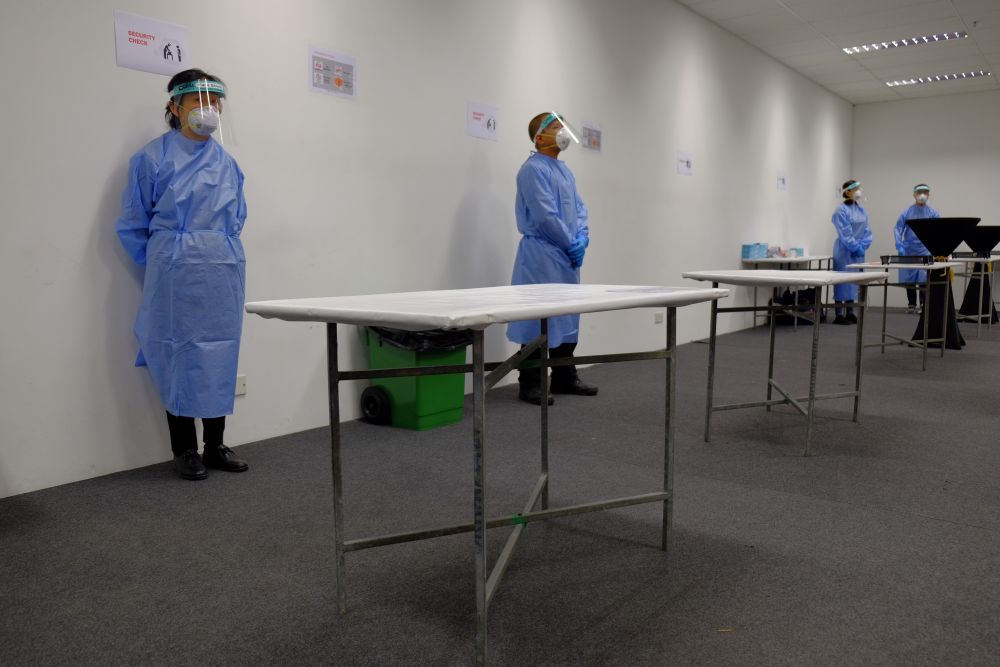 Image by Rexanne Yap
Image by Rexanne Yap
Upon entering the facility, patients have to check-in inside a converted function room. Mandarin Oriental, the luxury hotelier, are the managing agents for the whole of CEC, making sure that patients have a good experience with their expertise in hospitality.
First, patients undergo a bag check, to ensure that they do not bring in contraband - such as liquor, cigarettes, unauthorised sharp objects and electrical appliances into CEC.
Bag checks are done by security staff wearing full PPE.
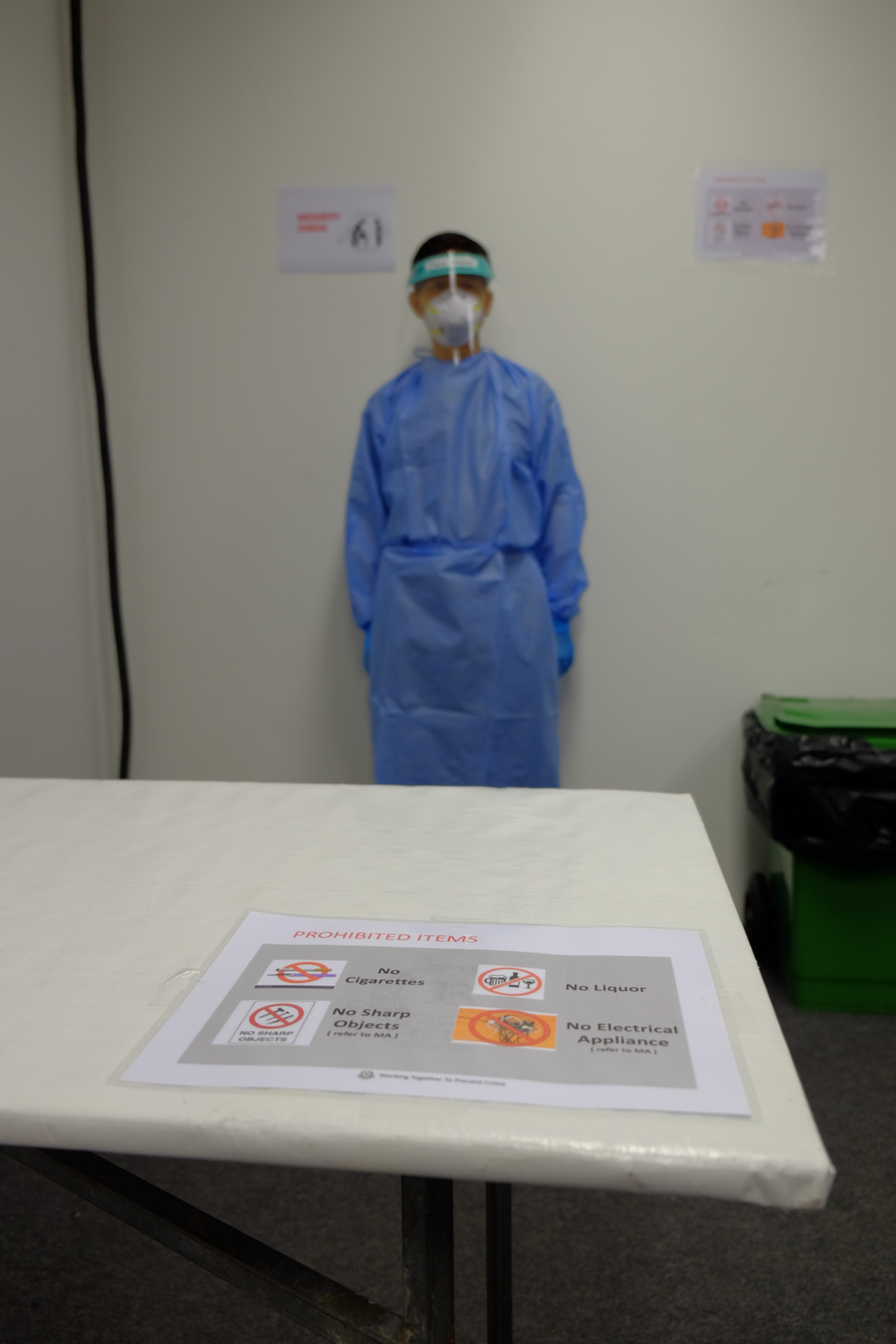 Image by Rexanne Yap
Image by Rexanne Yap
After their bag checks, patients will be given a welcome card and a wristband. The welcome card states their name, room number, access to free WiFi, and a QR code that directs them to a dedicated Telegram channel for announcement and entertainment.
Patients are tagged with a colour-coded wristband. White wristbands signify a recovering patient, while a red wristband signifies a patient with early symptoms. Patients with early symptoms - red wristbands - are given extra medical attention in case their health starts to deteriorate.
Uses Telegram channel to engage patients
The Telegram channel will broadcast messages in various languages such as Bengali, Tamil, English and Mandarin. Named “Second Home”, the channel will organise daily virtual programmes such as “Fitness by your Bed” and “Afternoon Online Matinees” to provide patients with exercise routines and entertainment.
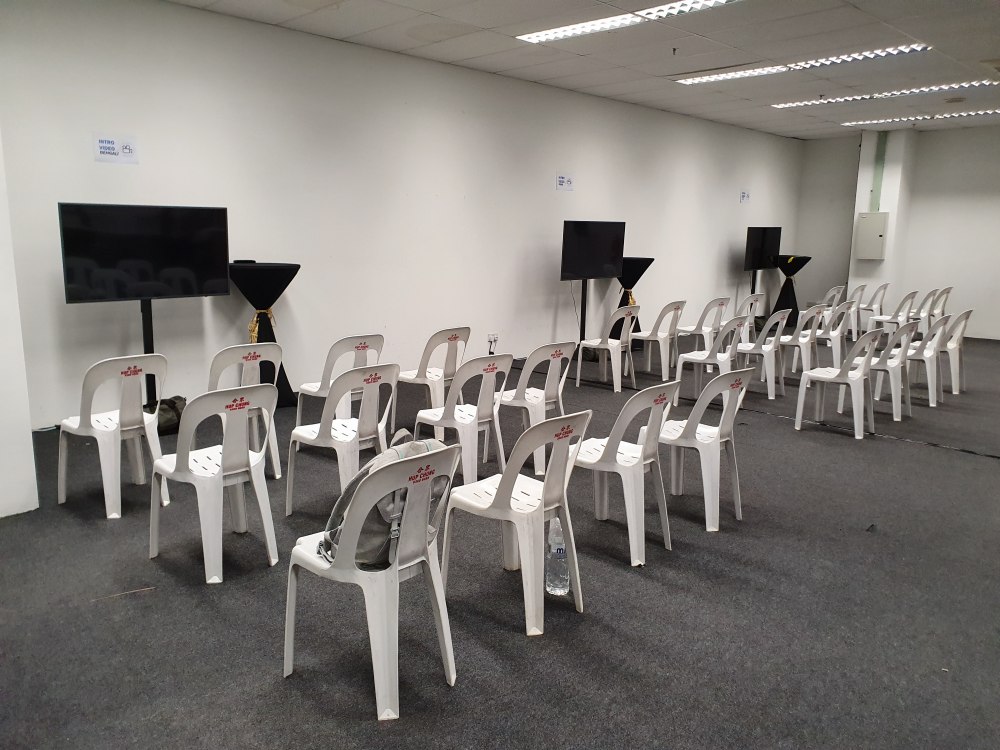 Image by Rexanne Yap
Image by Rexanne Yap
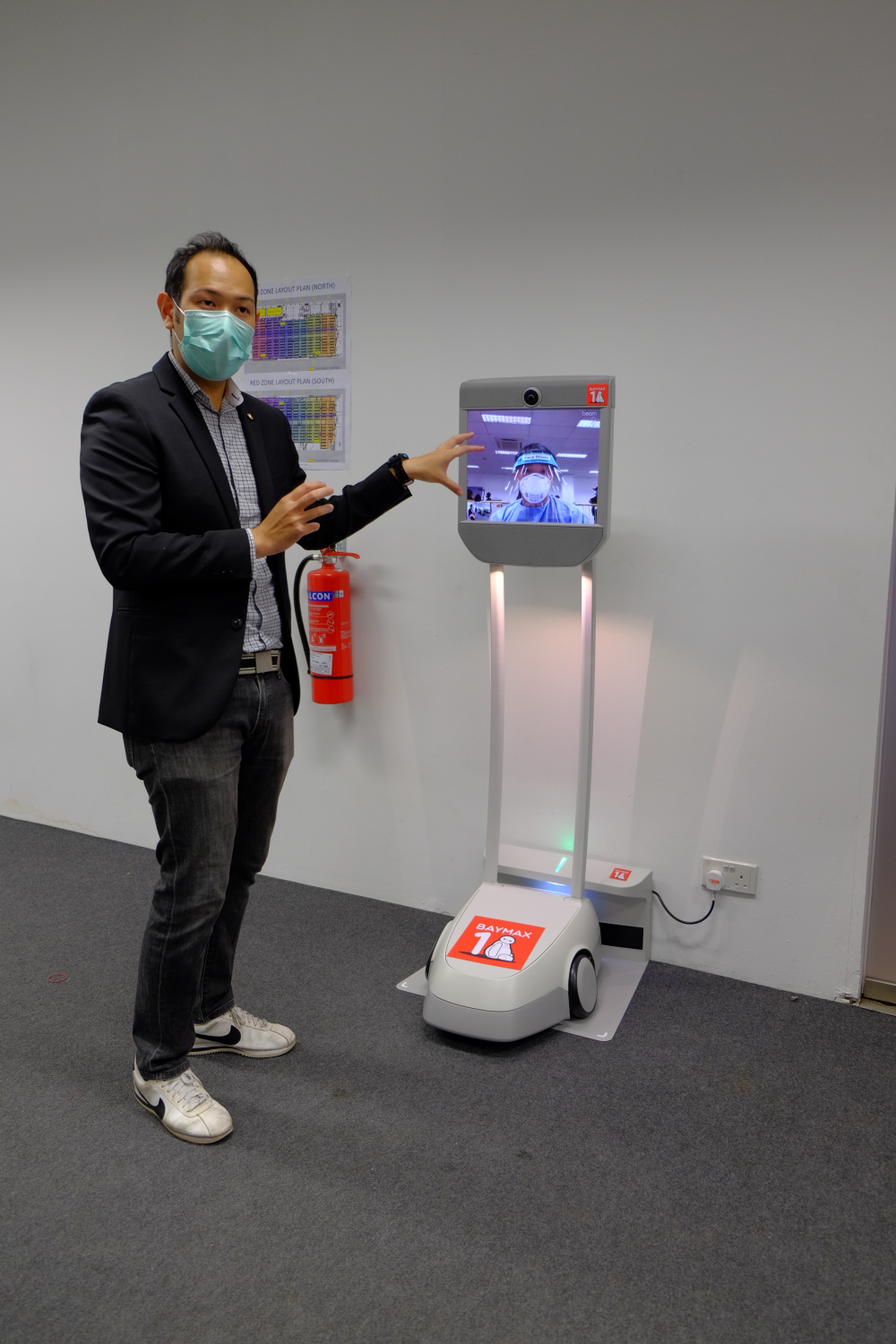 Image by Rexanne Yap
Image by Rexanne Yap
Volunteers from the Indian Associations will also send words of encouragement to patients through the Telegram channel at the start and end of the day.
After receiving their welcome card, the patients will be welcomed by staff who would check their particulars with the Ministry of Health (MOH). There are also around 5 stations for patients to access laptops for self-check-in, to reduce the number of staff for safety reasons.
Patients are also introduced to remote-controlled telepresence robots, who can help medical personnel or translators to interact with the patients, without needing to be physically present. There are a total of four telepresence robots within CEC.
Volunteers from Singapore Indian Development Association and other NGOs who can speak Bengali, Hindi, Marathi, Tamil and Telugu will be able to talk to patients in their native language. Medical and facility staff can also tap on free translation apps to communicate with patients.
After checking their details, patients will then watch an orientation video, which plays in Bengali, Tamil, English and Mandarin. Following the video, security staff will escort white-tagged patients into their rooms, and red-tagged patients to the medical centre.
24/7 Medical station
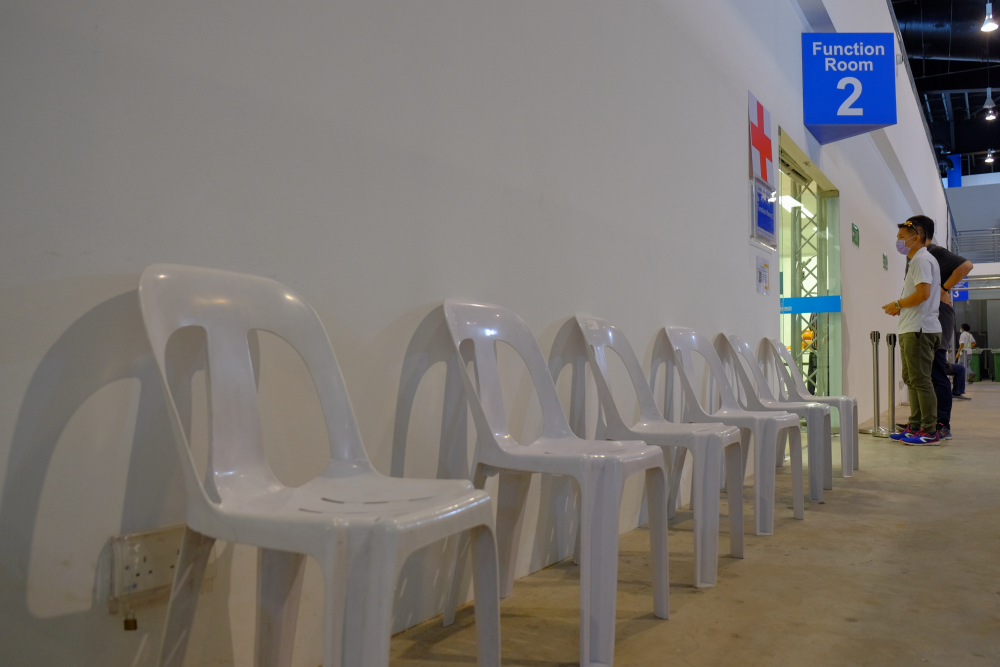 Image by Rexanne Yap
Image by Rexanne Yap
Raffles Medical Group is the healthcare services provider for CEC, placing their doctors and nurses on shift 24/7 in the medical centre and in the six teleconsult stations in the living area.
Doctors, nurses and healthcare staff will conduct sick parades and ward rounds as well.
Red-tagged patients with early symptoms are given a full medical examination before they retire to their beds. Patients can sit and wait their turn for doctors and nurses on shift to register them and conduct their examinations.
Upon arrival to CEC, patients will also receive a care pack of assorted medicines for common symptoms such as fever and cough so that they can self-medicate if needed.
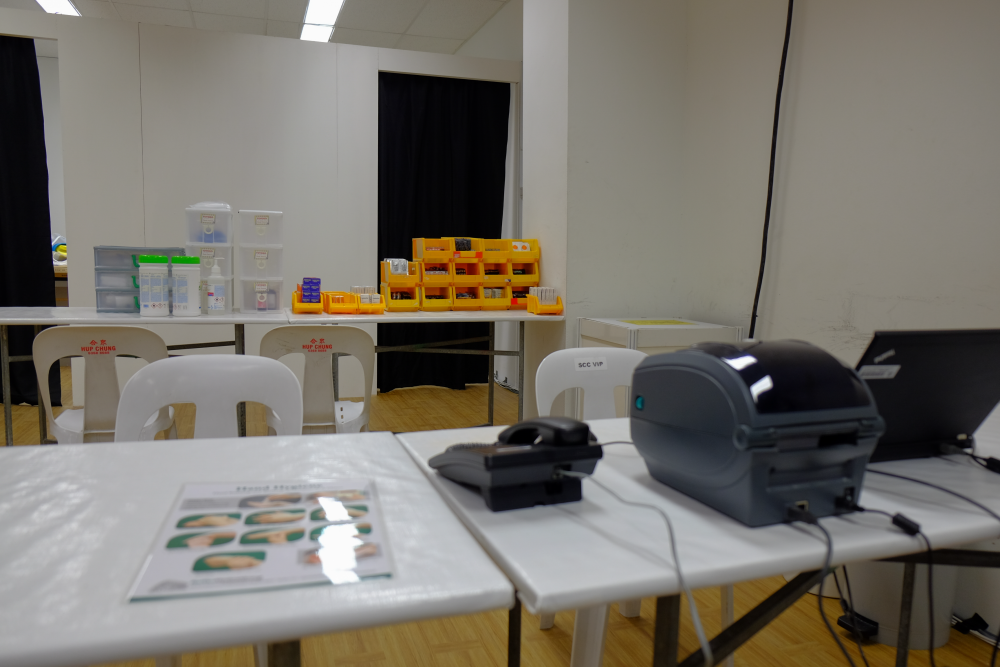 Image by Rexanne Yap
Image by Rexanne Yap
The medical centre also contains a medicine dispensary, stocked up with sanitiser, wipes, and common medicine to combat Covid-19 symptoms such as fever, body aches, nasal congestion, and diarrhoea.
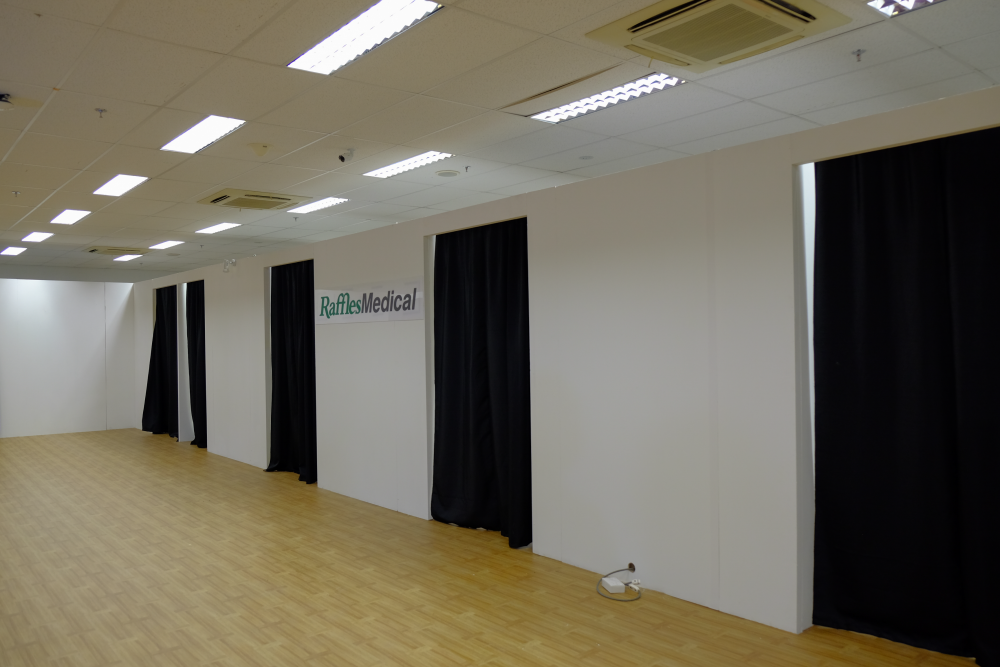 Image by Rexanne Yap
Image by Rexanne Yap
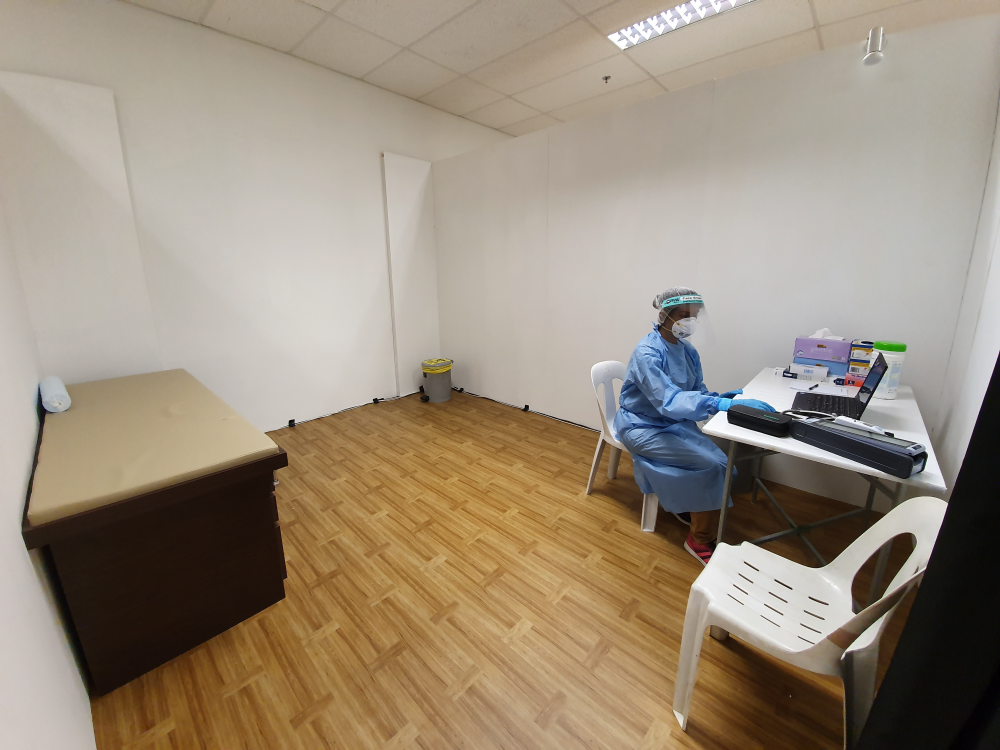 Image by Rexanne Yap
Image by Rexanne Yap
The consultation rooms are retrofitted with essential medical equipment such as an examination bed, blood pressure monitor, and a thermometer.
Should patients need help in overcoming the language barrier, a telepresence robot will be stationed at the medical centre that can connect them to a volunteer that speaks their native tongue.
Rooms and Beds
 Image by Rexanne Yap
Image by Rexanne Yap
The living area houses 288 rooms, with most rooms having up to 10 beds in total, which brings the total indoor capacity to 2,700.
The area is divided into different colours to prevent intermixing as much as possible. Patients are also housed together by their tag colour and ethnicity for ease of communication and dietary requirements.
One machine (not pictured above) will be shared by 20 patients for them to conduct health checks on their own three times a day and record their health parameters, such as their temperature, blood pressure and pulse reading. These health parameters will be submitted via an app to the medical team for routine monitoring.
Security cameras are installed throughout the facility to discourage misbehaviour. Fire extinguishers are located every two rooms in case of an emergency.
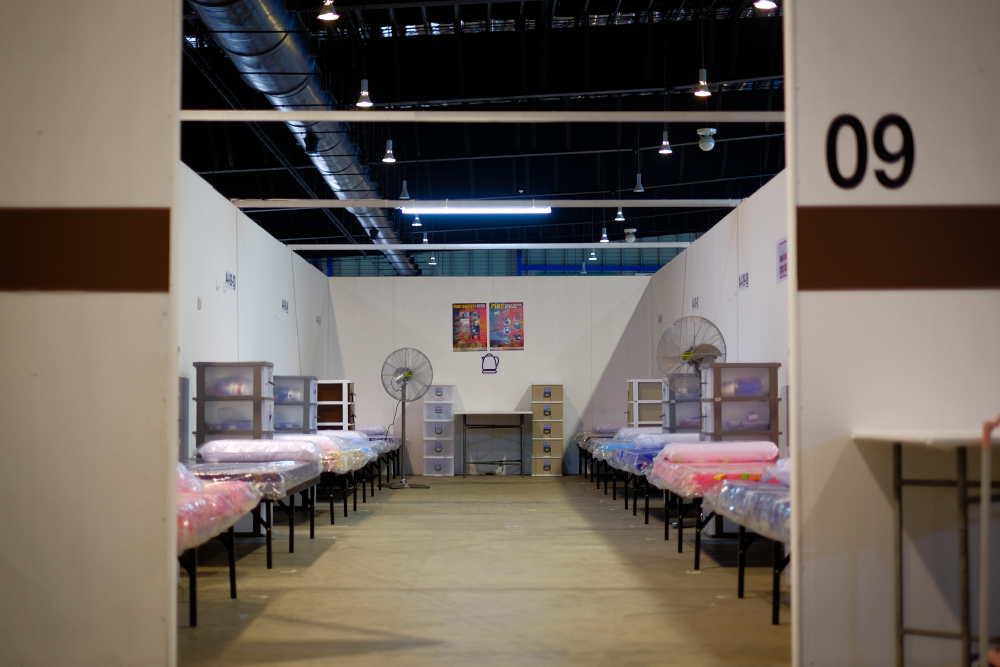 Image by Rexanne Yap
Image by Rexanne Yap
Inside the rooms, there are two standing fans for air circulation and a common table for a pantry. A kettle will be placed in the centre of the room, with snacks and 3-in-1 drinks provided for the patients. Fire safety posters and evacuation routes are shown clearly on the walls.
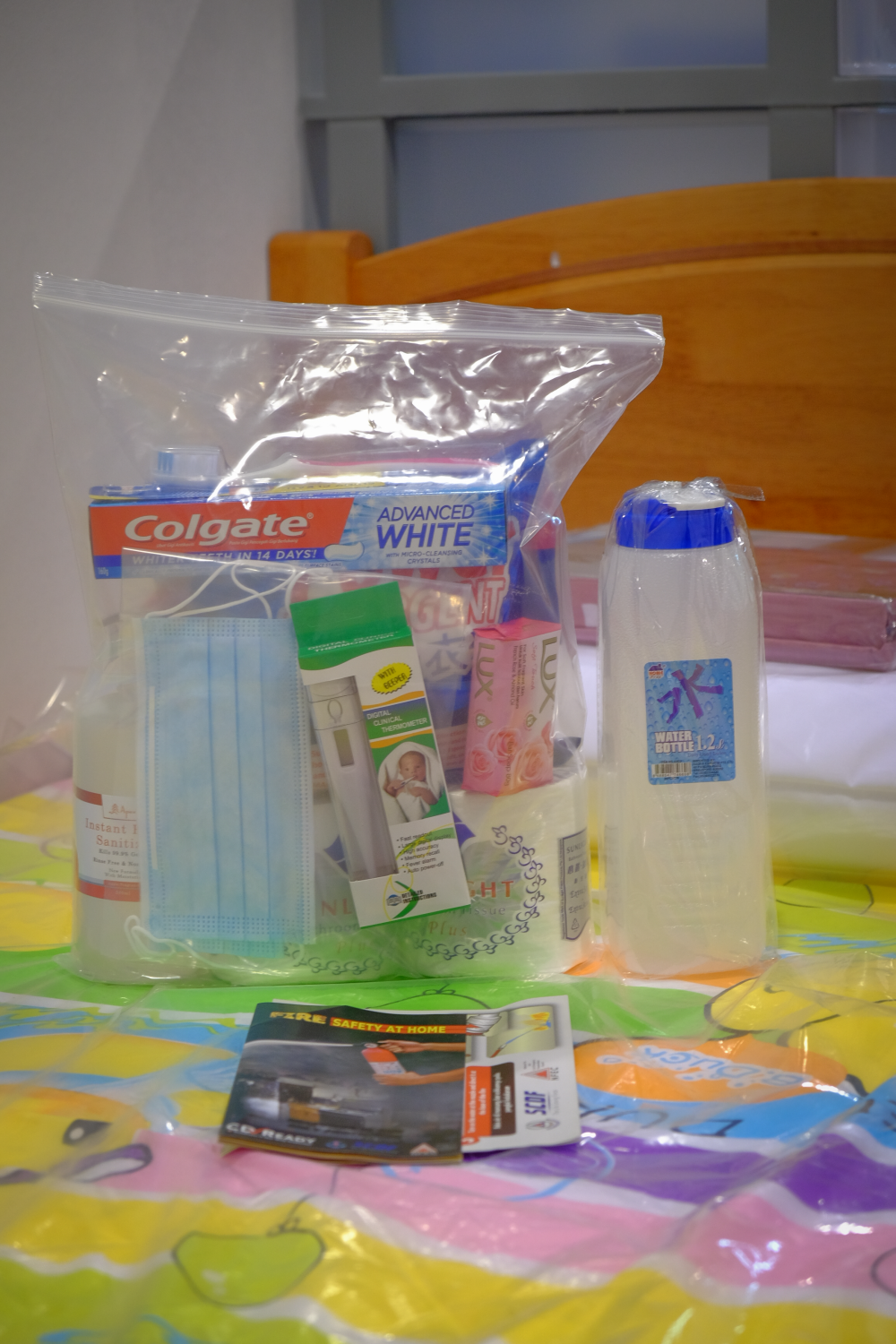 Image by Rexanne Yap
Image by Rexanne Yap
Placed on the beds are bed and pillow covers, a water bottle, safety brochures and a welcome pack. It contains essentials such as toothpaste, a toothbrush, two rolls of toilet paper, an oral thermometer, laundry detergent, a bar of body soap, a few masks, and hand sanitiser.
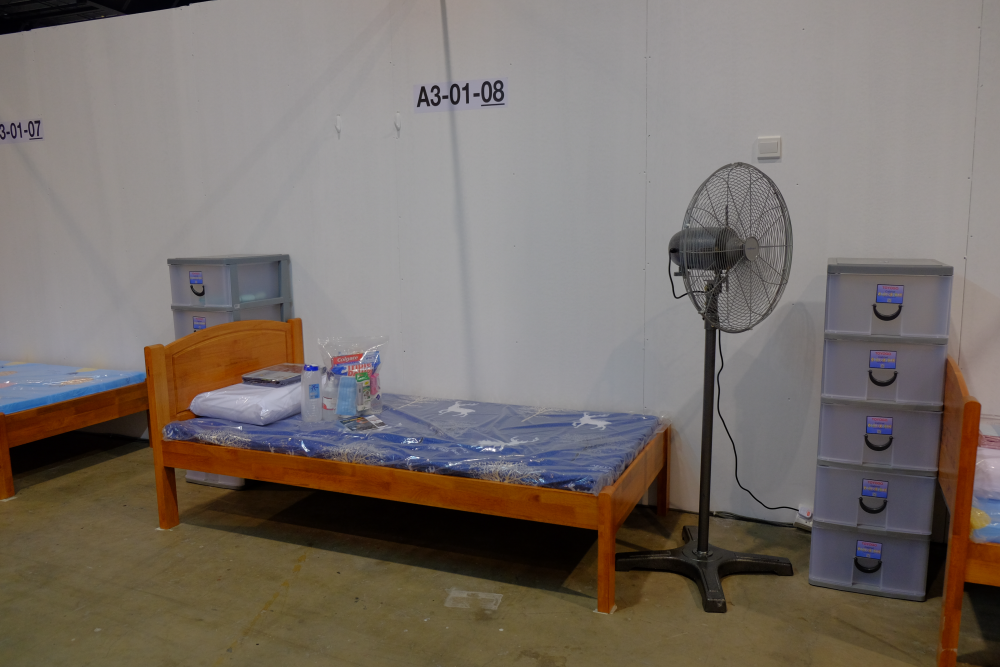 Image by Rexanne Yap
Image by Rexanne Yap
Every patient will have a bed and a chest of drawers for their belongings. They are also afforded one power plug to power their electronic devices, such as their smartphones. The bedframes vary across rooms as there was difficulty in sourcing for suppliers who could provide 2,700 bedframes within a short period of time.
In compliance with safe distancing rules, beds are spaced every six metres apart, as compared to four metres in the dormitories.
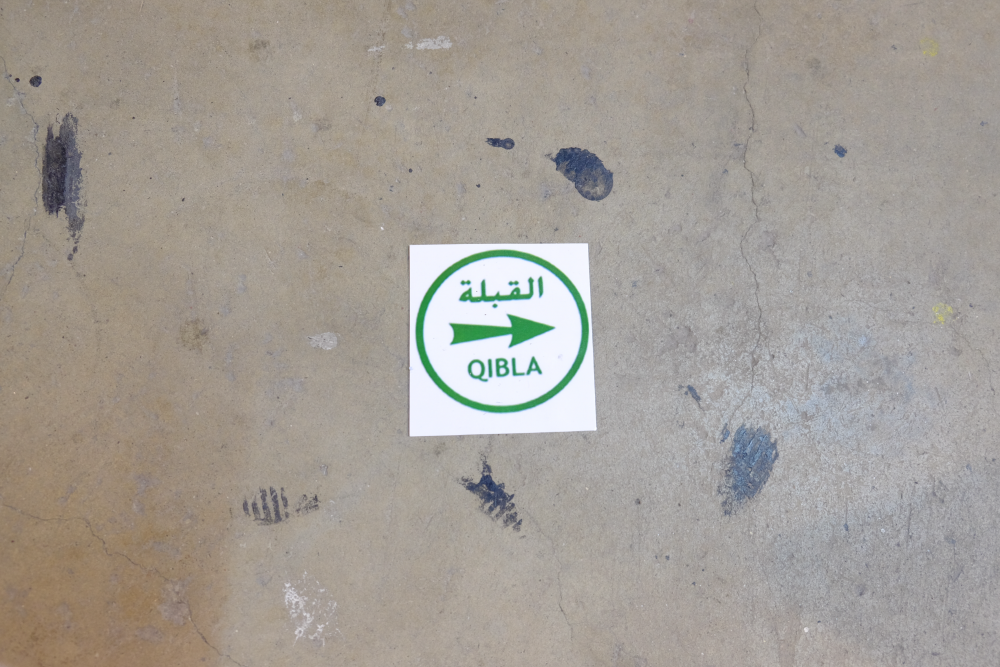 Image by Rexanne Yap
Image by Rexanne Yap
On the floors, there are Qibla markings for patients who practice Islam to pray. Prayer mats are also provided by CEC for patients who practice Islam.
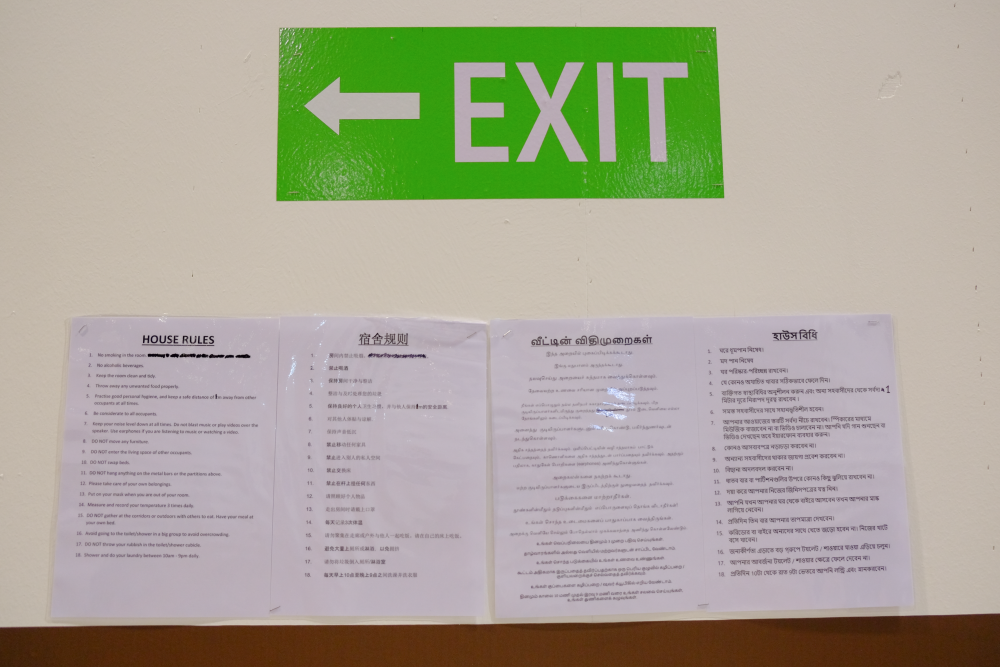 Image by Rexanne Yap
Image by Rexanne Yap
On the corridors, the house rules in English, Mandarin, Tamil and Bengali are pasted up. Some notable rules include only eating meals at their bed instead of in common areas, and to avoid going in big groups to the toilet or showers.
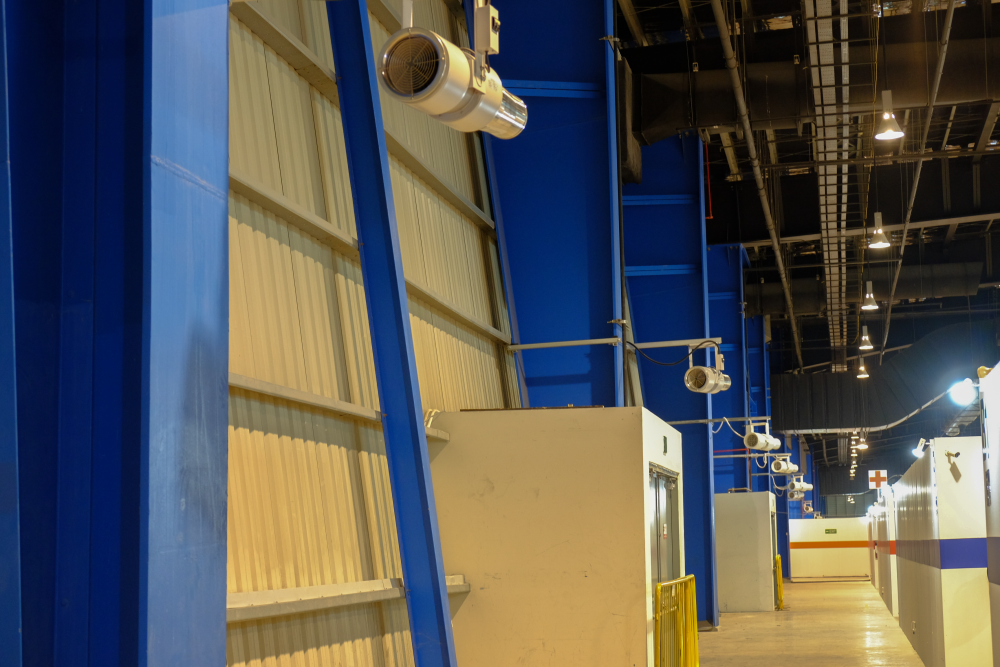 Image by Rexanne Yap
Image by Rexanne Yap
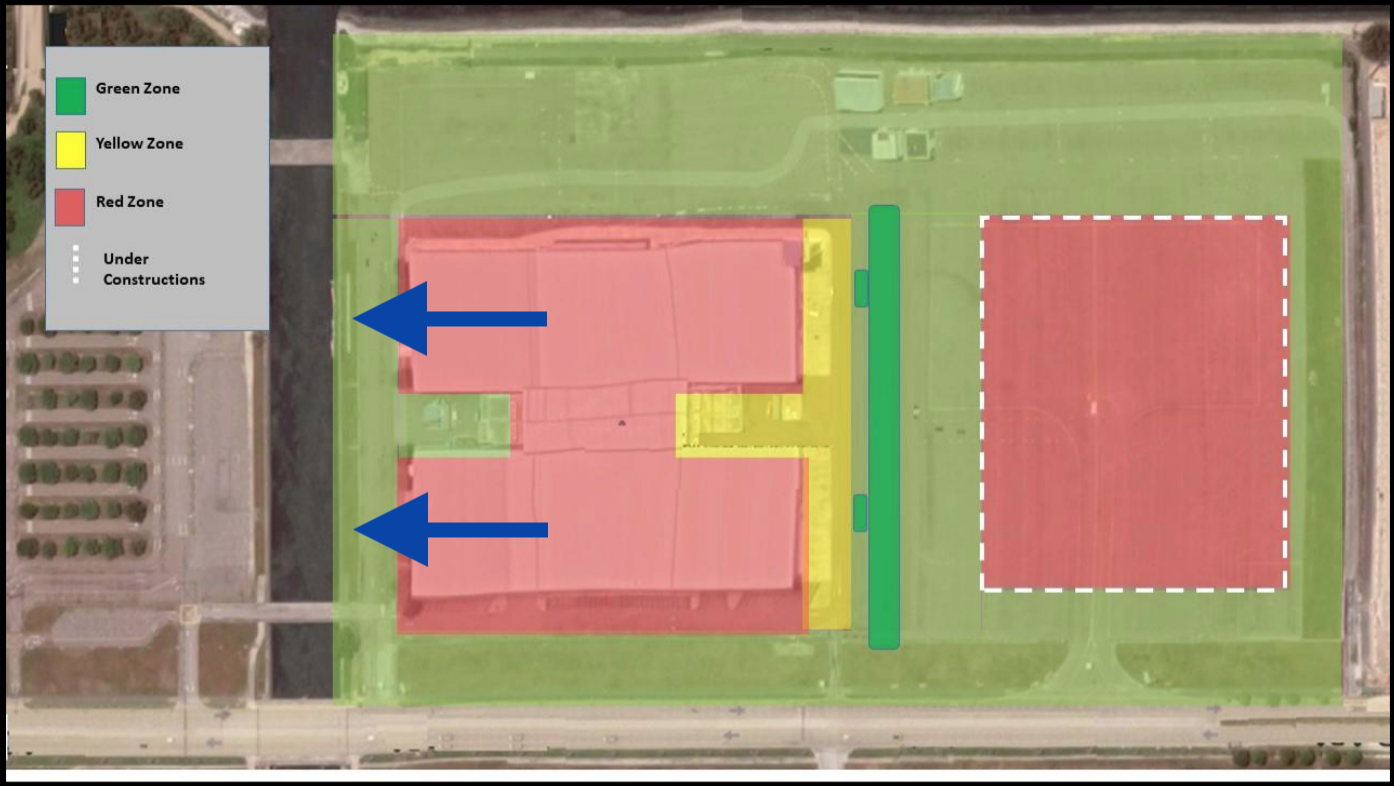 Edited diagram from CEC Facility Executive Committee
Edited diagram from CEC Facility Executive Committee
The ventilation of the living area is a mix of natural ventilation and air conditioning.
The internal temperature is maintained at around 28-29°C.
Fifty-two jet blowers ensure that air in the facility only flows in one direction, away from the yellow and red zones. The constant stream of fresh air flowing in one direction was approved by the National Centre for Infectious Diseases to be safe and conducive for the facility.
Six 24/7 Teleconsult Rooms
 Image by Rexanne Yap
Image by Rexanne Yap
If patients feel unwell and have persistent symptoms, they can go to the nearest of six teleconsultation stations.
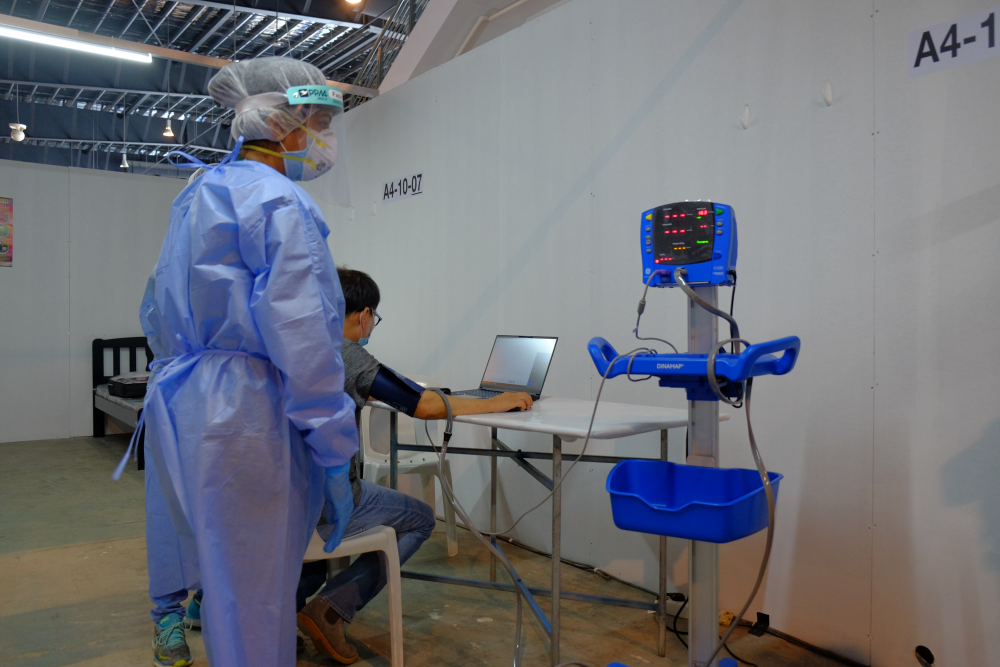 Image by Rexanne Yap
Image by Rexanne Yap
In the teleconsult station, at least two healthcare staff will be stationed there to help the patient monitor their vital signs and assist them in the teleconsult.
Patients will virtually consult with a doctor through a video call, which helps to minimise the risk of cross-contamination, yet allowing patients to receive medical attention. These doctors can also be consulted from their General Practitioner clinics, instead of having to come down to CEC.
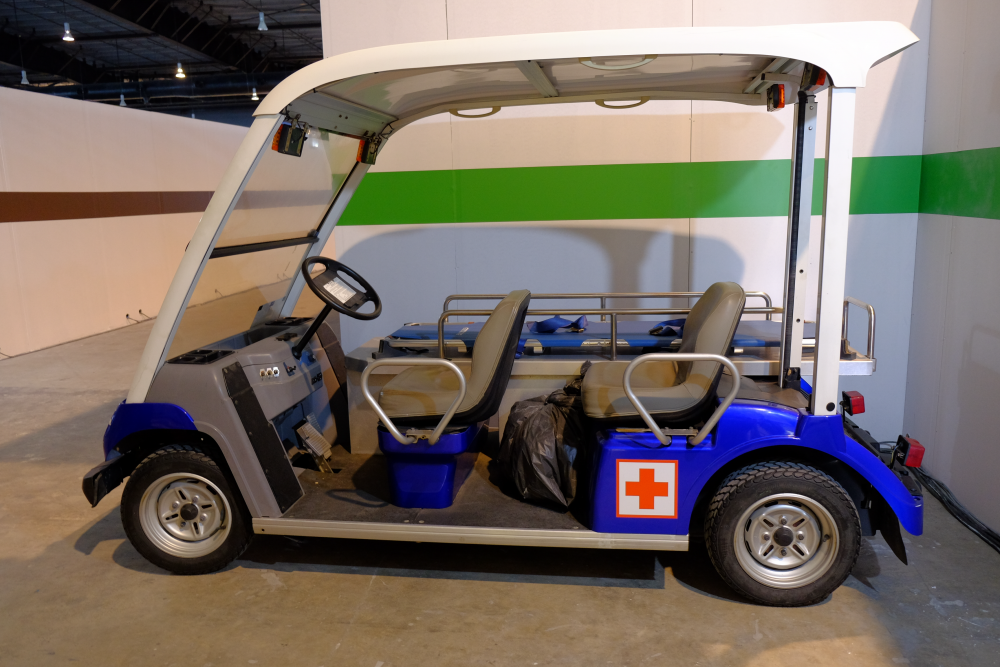 Image by Rexanne Yap
Image by Rexanne Yap
For more serious cases, or if the teleconsulted doctor recommends a physical consultation, the patient will then be brought to the medical centre.
A repurposed golf cart is used as an ambulance to ferry patients across the facility quickly.
There are emergency buttons located in the various sectors for patients to access, which will alert the operation and medical centres when activated. In addition, an emergency hotline is available 24/7.
In the event that a patient’s condition deteriorates significantly, the medical centre is equipped to stabilise patients before they are being transferred by an on-site ambulance to the nearest hospital, Changi General Hospital.
Food robots
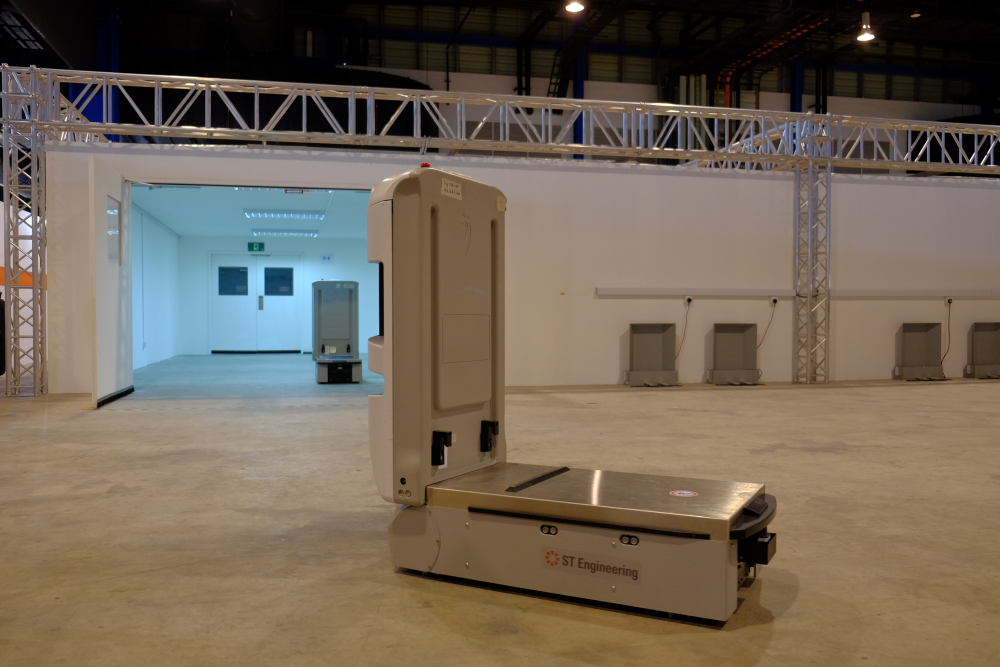 Image by Rexanne Yap
Image by Rexanne Yap
To minimise manpower for food distribution, ST Engineering’s STrobo Tug robots are used to deliver food from the Yellow Zone to the centre of the Red Zone for patients to self-collect.
Mealtimes will be broadcasted on the PA system within the exhibition hall and on the Telegram channel.
On the menu is Indian, Bangladeshi, Chinese, and Vegetarian cuisines, all of which are halal. Mealtimes occur three times a day, with dinner being served after 7pm and an extra meal time at 4 to 5am for patients observing Ramadan.
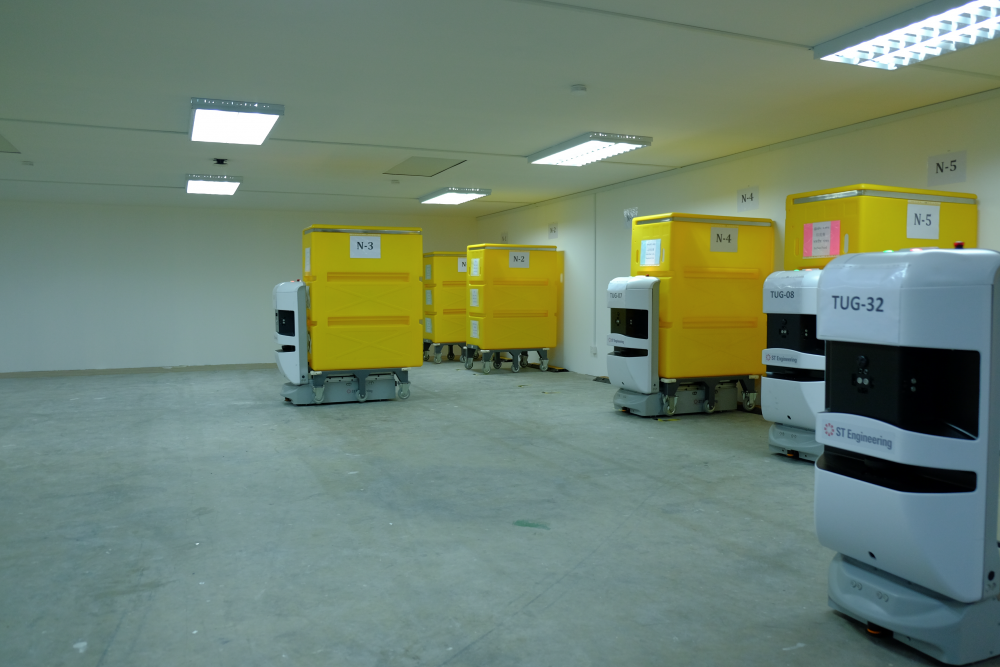 Image by Rexanne Yap
Image by Rexanne Yap
The robots go into a special high-pressure chamber, where the airflow makes it such that air from the Red Zone cannot enter the chamber. Staff will place food into the containers, leave the chamber, then let the robots deliver the food into the Red Zone.
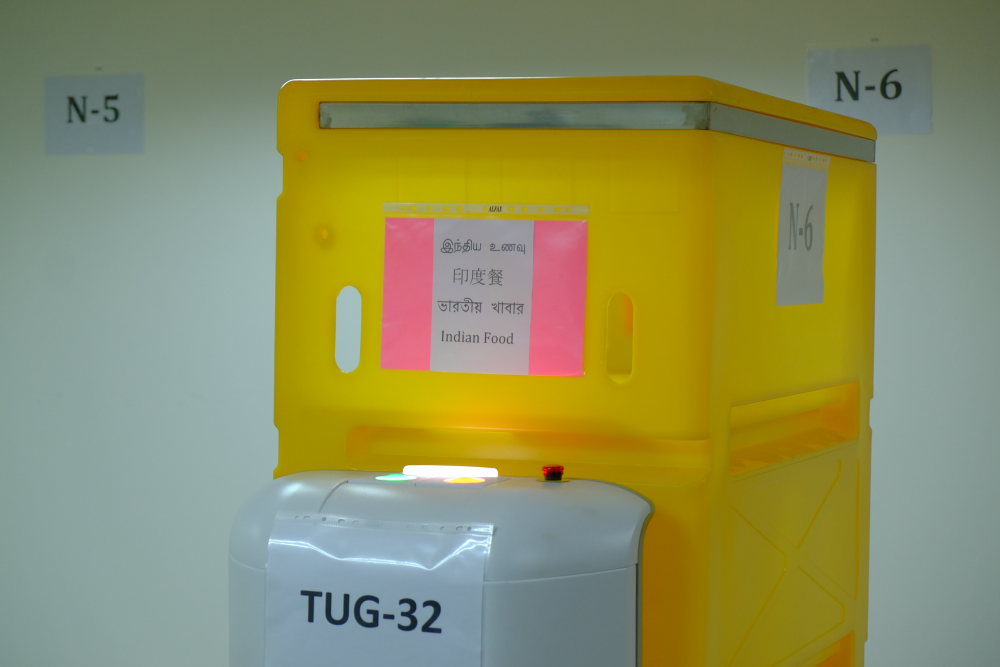 Image by Rexanne Yap
Image by Rexanne Yap
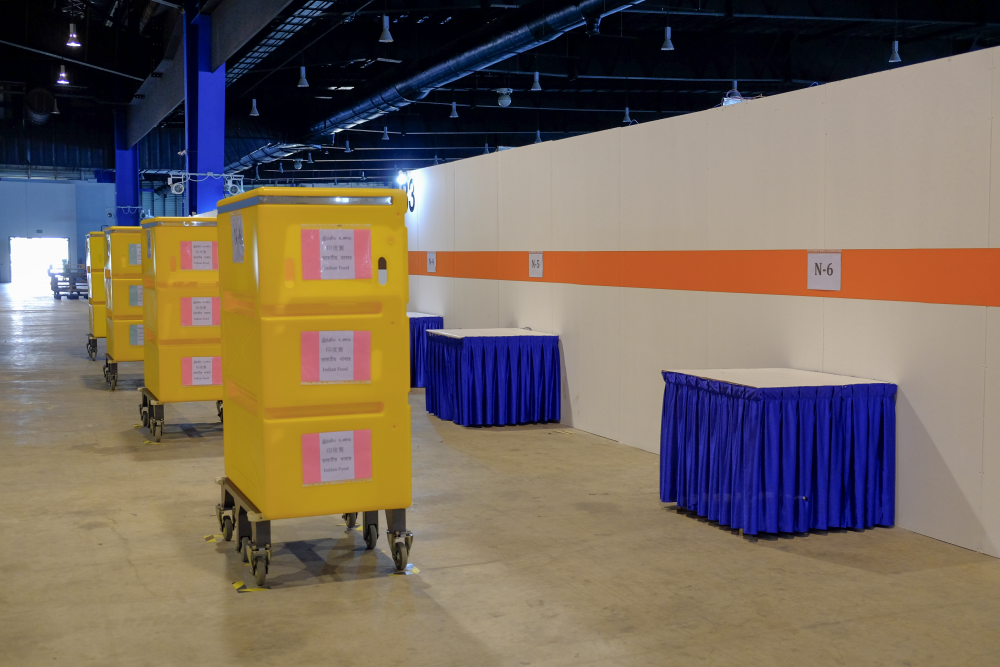 Image by Rexanne Yap
Image by Rexanne Yap
There are currently five food robots being deployed in the facility, with plans to scale it up to 12 as more patients pour in. Each food cart contains 192 meal sets, depending on the size of the meal set. Each robot replaces six to eight people when it comes to food distribution.
In about one hour, all 2,700 patients can be served their meals. Cleaners in full PPE will come to clean the food carts after mealtimes, placing leftover food on the blue tables.
Courtyard and Toilets
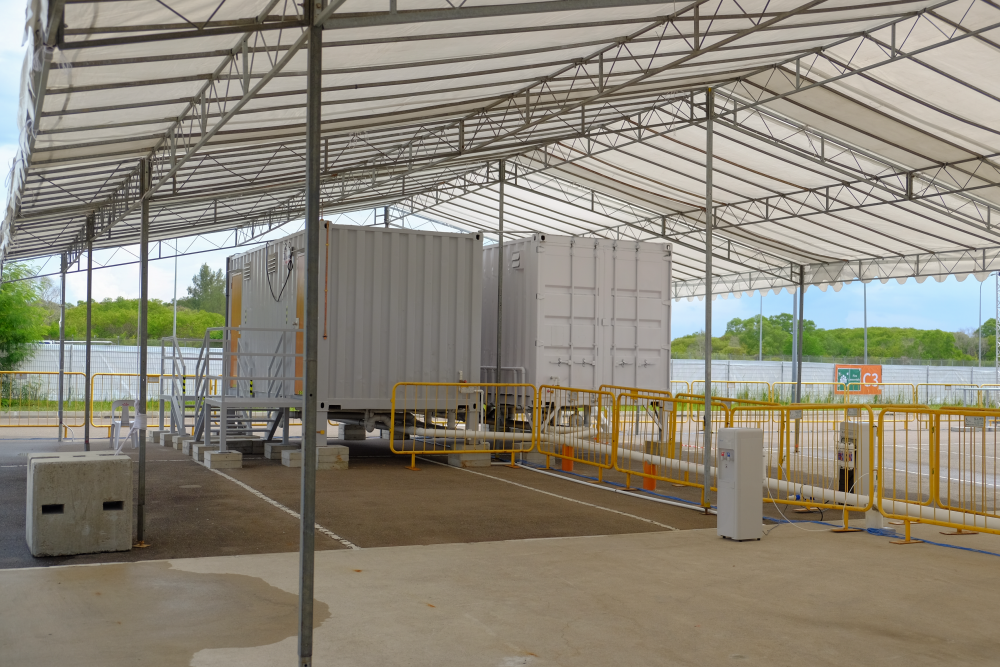 Image by Rexanne Yap
Image by Rexanne Yap
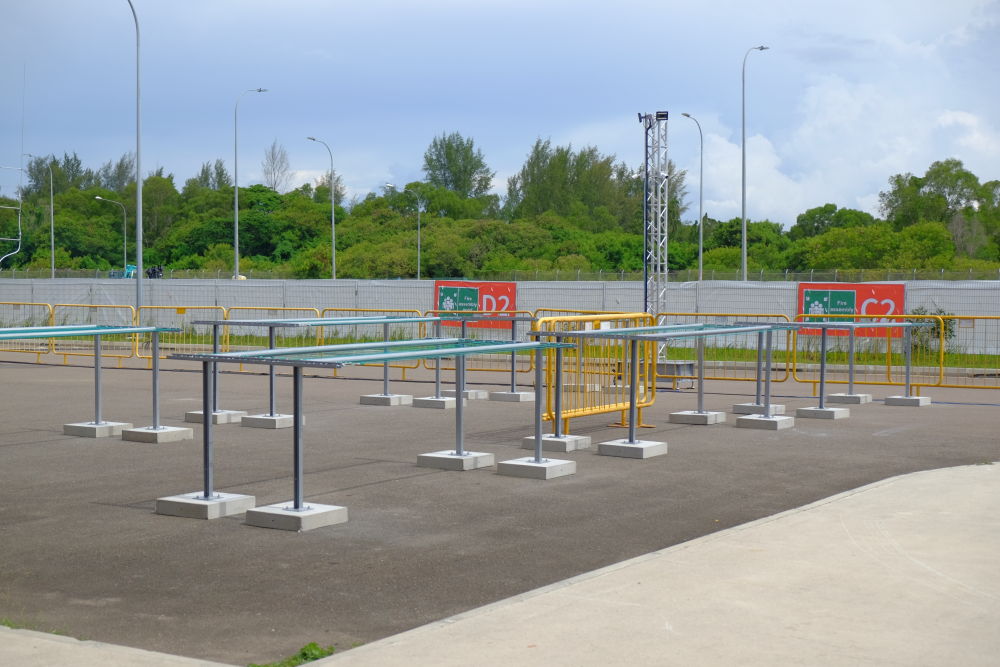 Image by Rexanne Yap
Image by Rexanne Yap
Patients can also access the outdoor courtyard area within the Red Zone, which houses the toilets, water coolers, and laundry poles.
Patients can wash their clothes in pails that would be provided to them, while their bedding will be washed by professional launderers.
There are two types of toilets: those in a container, and the common portable toilet we see in concerts and outdoor events.
There are a total of 144 cubicles in CEC, all fitted with a showerhead.
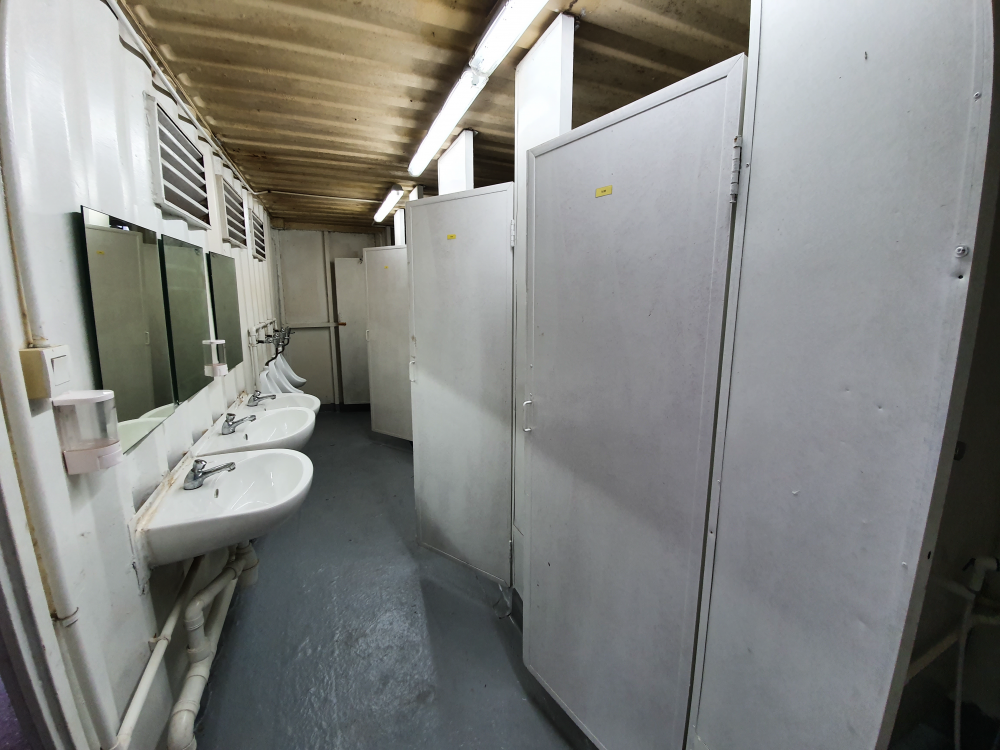 Image by Rexanne Yap
Image by Rexanne Yap
 Photo by CEC Facility Executive Committee.
Photo by CEC Facility Executive Committee.
Inside the container toilets, there are five cubicles, three sinks and three urinals. The toilets have a bidet and a push-button shower system.
Welfare and Mental health
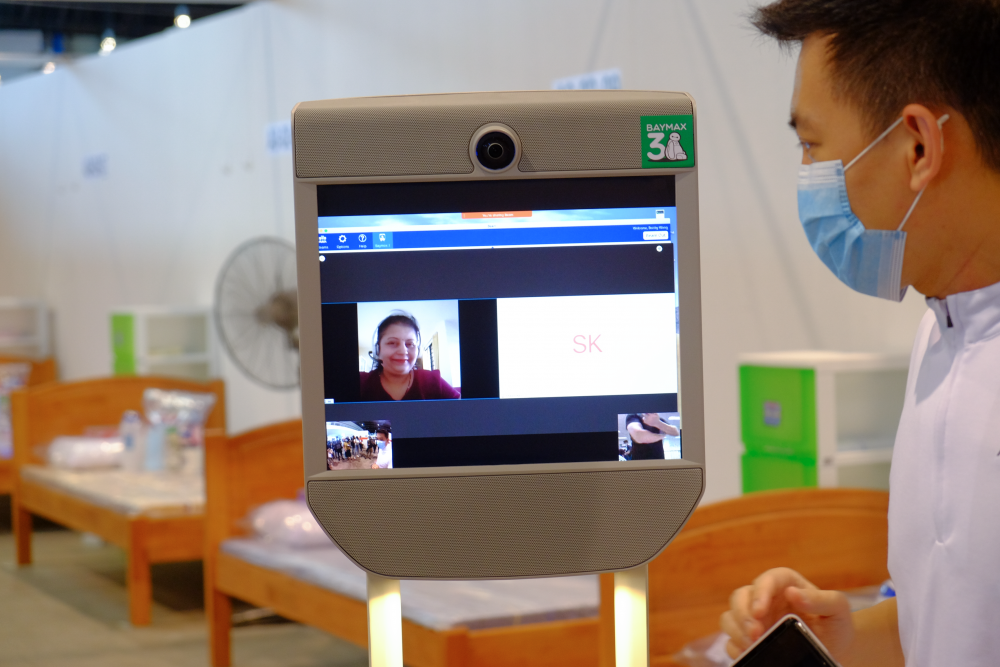 Image by Rexanne Yap
Image by Rexanne Yap
To care for the welfare and mental well-being of patients, CEC has provided ways to reach out to patients to ensure their psychological and emotional health.
Teleconsult stations can be used by volunteers to converse with the patient in their native language and understand their difficulties. Patients will receive phone calls to check on how they are keeping, and they can provide feedback on how they are feeling or what needs to be changed through these calls or via a dedicated feedback app.
Patients can also visit a teleconsult station to talk to a doctor regarding their mental health. If they are lonely or depressed, they can get treatment from doctors.
Patients will also have access to free programmes on Mediacorp’s MeWatch. They can also redeem voucher codes for other content on StarHub Go, from channels such as Sun TV, Sun Music, Vannathiral, Zee Cinema and Zee Thiral.
For patients who do not have smartphones, they are advised to share one with another patient, while plans are underway to provide devices to these patients if need be.
Donated items from charity groups and NGOs will be packed and sorted by facility staff in the Green Zone, before it is delivered to patients in the Red Zone. The public is encouraged not to donate items on their own, but can consult these charity organisations to know what the patients in the facility need.
Discharging fully recovered patients
Patients can be swabbed in the facility to test if they still carry the Covid-19 virus. If they test negative and are deemed fully recovered, the Ministry of Health will rescind the isolation order and will inform CEC facility staff when the patient may be discharged.
CEC's staff will then arrange for transport for the person to return home, or for the employers to pick them up from the facility at the Green Zone.
Portrait Mode is a photo essay series documenting the lives and experiences of people and things in Singapore, seen through the lenses of our young photographers at Mothership.
Top photos by Rexanne Yap
If you like what you read, follow us on Facebook, Instagram, Twitter and Telegram to get the latest updates.
